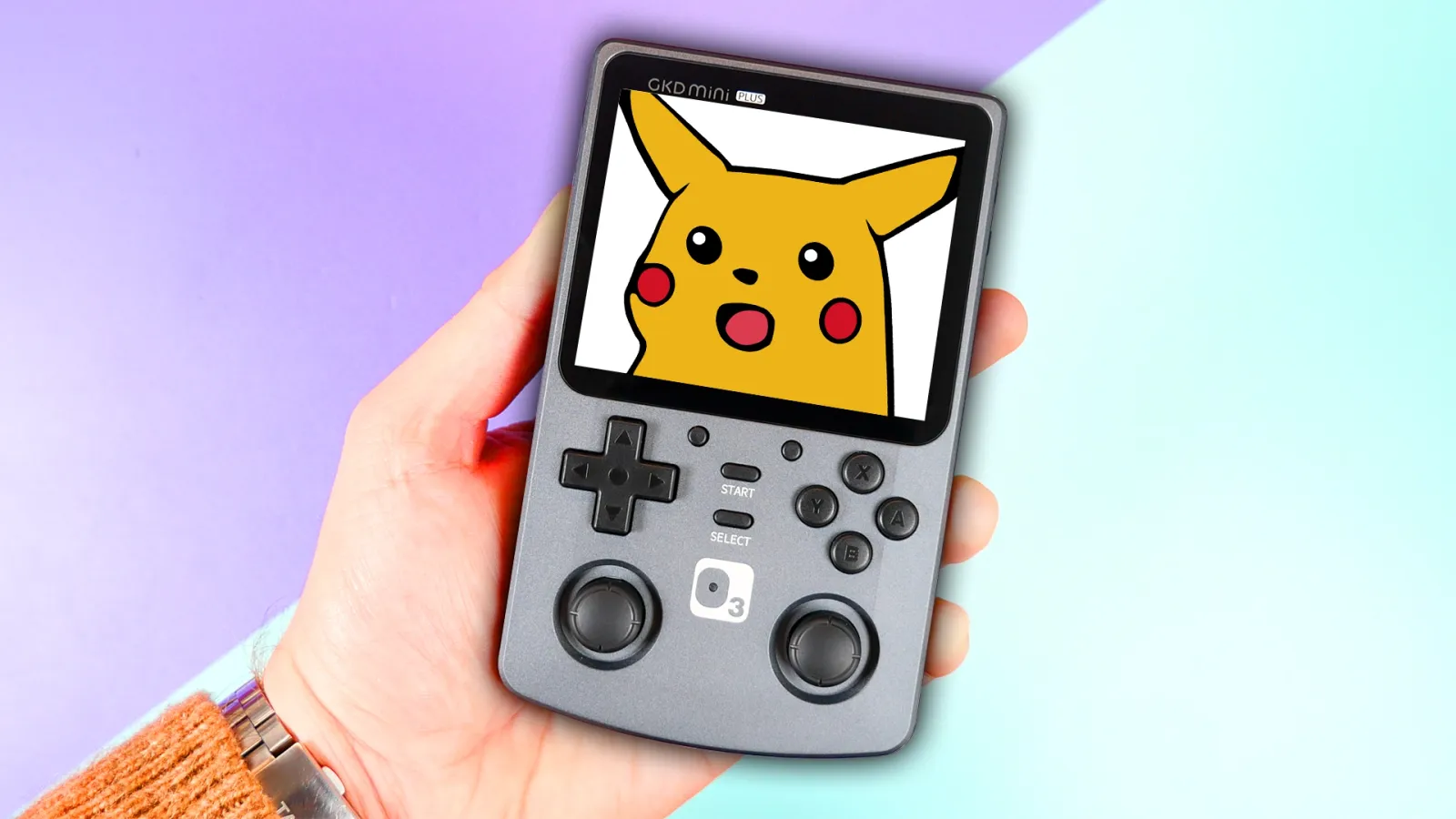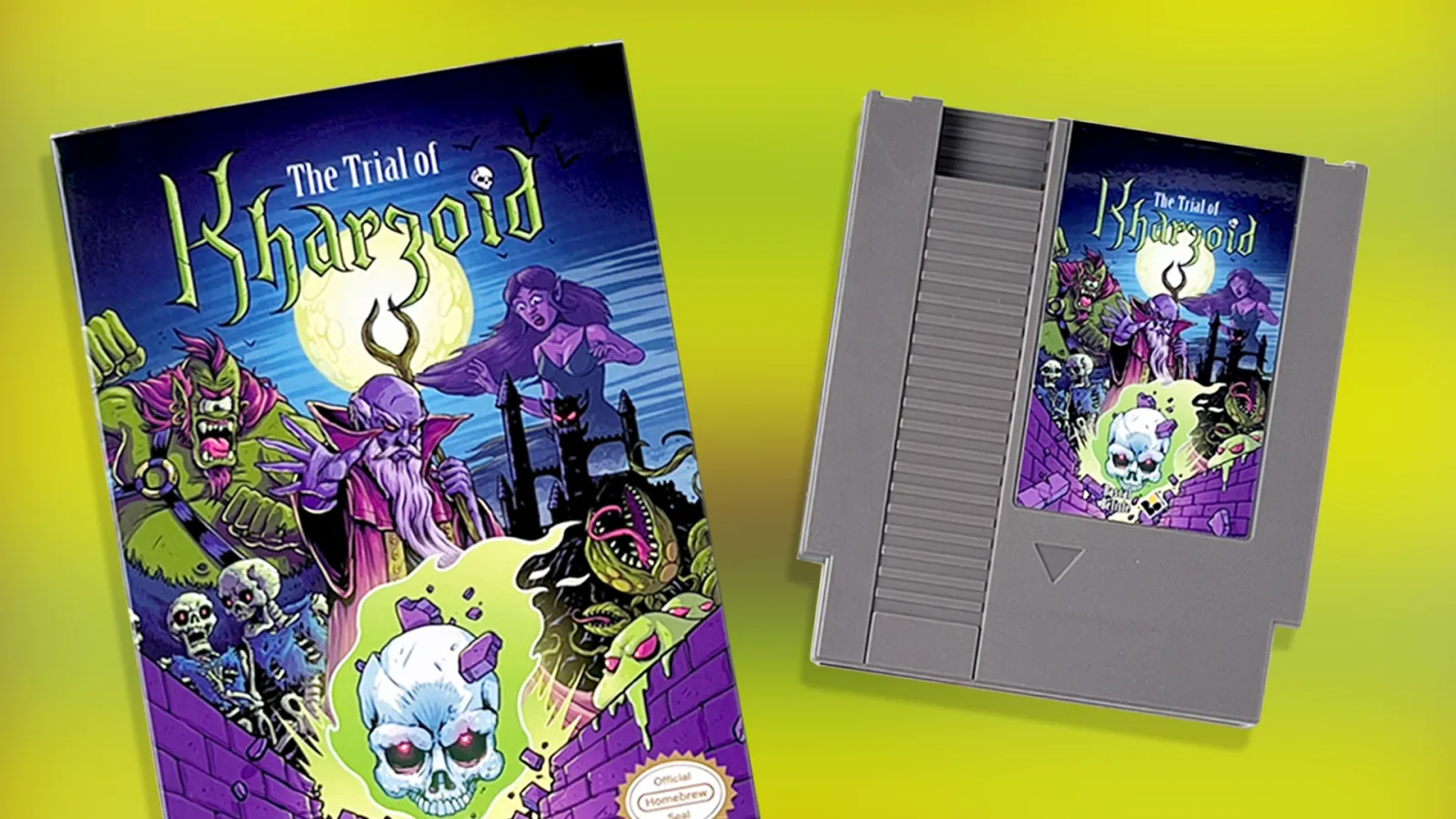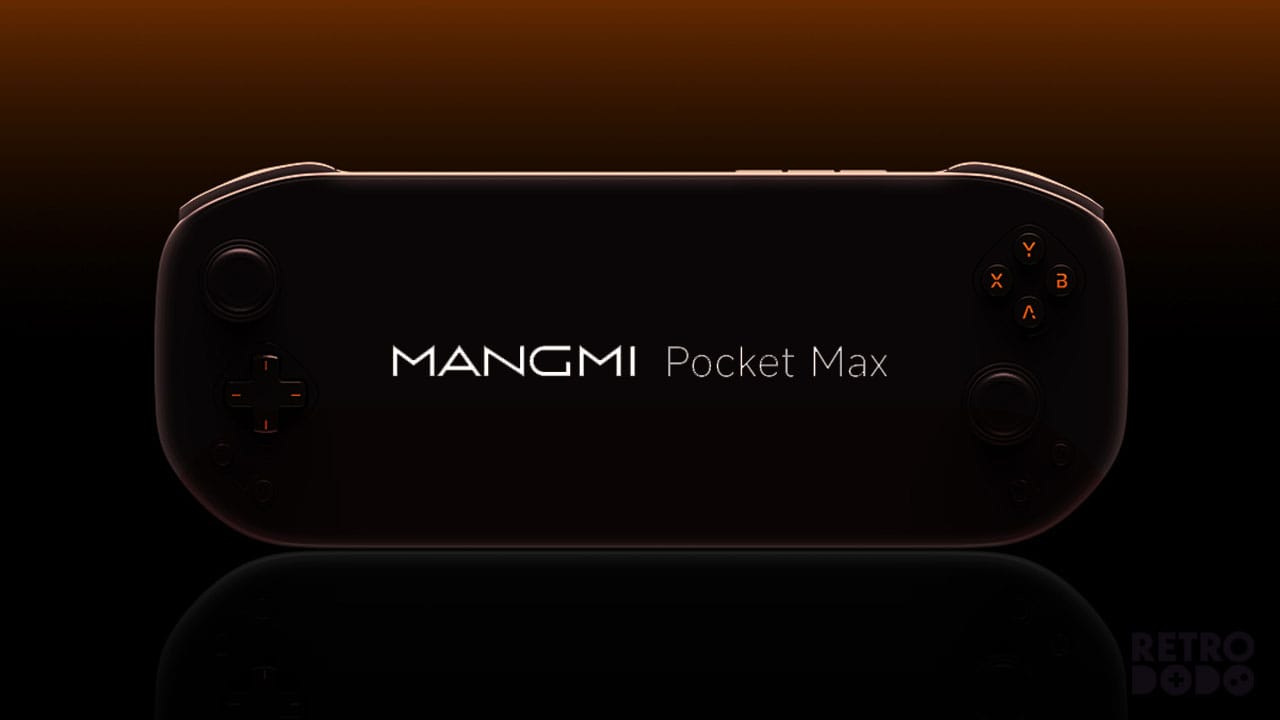Some of you may not know of the brand GKD, which is understandable as they have been out of the game for some while now, but they have had a history in the handheld industry, albeit, not the best history, but they are continuously making steps forward to create handhelds for the masses.
Their most recent being this, the GKD Plus Classic, a metal vertical handheld that caught our attention many months ago when it was teased online.
As of 30th December, you can now officially pre-order it from their website for $179, even though they advertised the “RRP” as $279 through their crowdfunding campaigns, making it feel like backers were getting a superb deal, when in reality it was always going to be $179 at retail.
GKD Classic Plus Specifications

- 3.5″ IPS Display w/ Tempered Glass (640 x 480)
- 1.8Ghz RK3566 CPU
- 1GB RAM
- 3000MAH Battery
- WiFi/Bluetooth
- USB-C
The GKD Plus Classic is designed to be a more premium version of the GKD Mini launched way back in mid 2021. This time they have gone for a larger design.
After playing with it for a few weeks, I realise that they have done what ANBERNIC should have done, and made the RG353V metal.
In fact it’s nearly identical to the RG353V in every way, even down to the specs.
But where the Plus Classic prevails is build quality. The metal design alongside the sleek black buttons and the fake cartridge on the back gives it character and charm, something many handhelds these days lack.
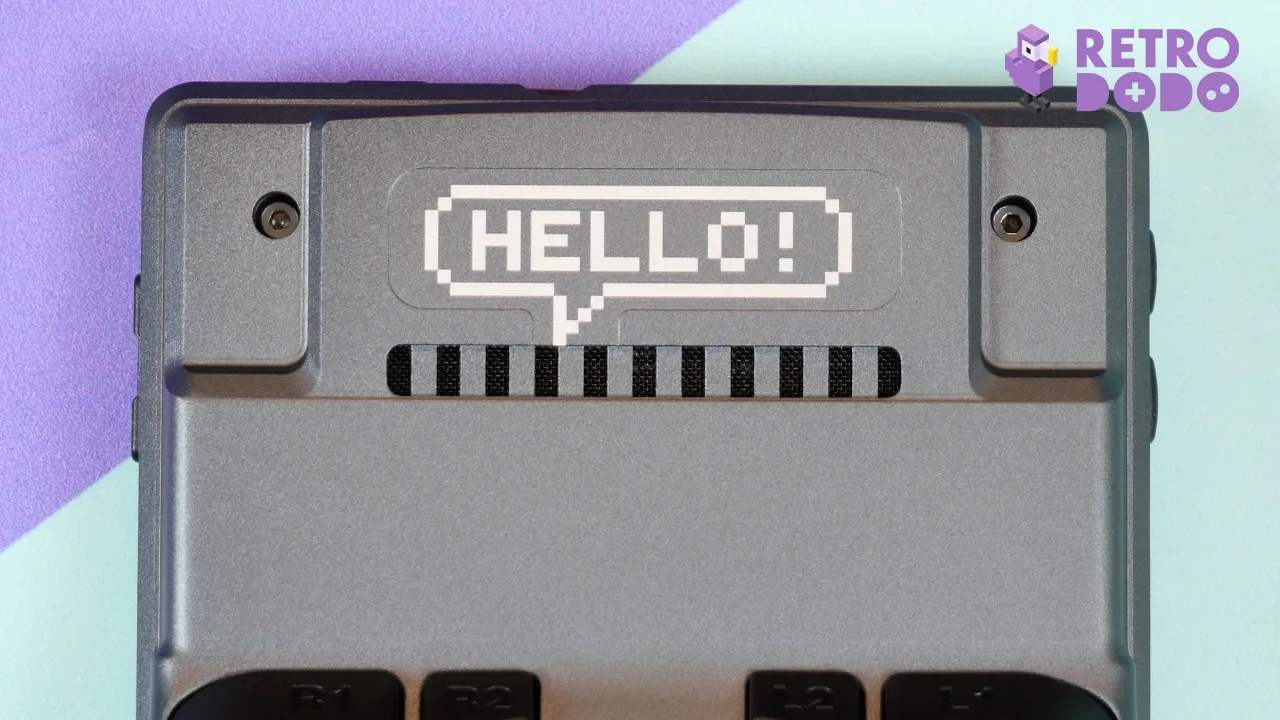
It feels and looks like a Gameboy Color on steroids thanks to the screen’s large bezel, and for those that know me well, the Gameboy Color is my favourite handheld of all time, so this is somewhat nostalgic for me to play on.
Design & Appearance
The face and front design is a little cluttered, but that’s just me liking minimal buttons on the front of my devices.
The screen is an absolute pleasure to play on, and although it’s not a super high resolution, a 640 x 480 resolution on a 3.5” IPS display is just fine on a handheld of this calibre, and it’s protected by a tempered glass screen.
The logo sits on the top left, and I’ll admit it confuses me a little bit, because they have titled this handheld the GKD Plus Classic, but the logo says GKD Mini Plus, indicating that there is a bigger and “non-mini” handheld, which is not the case.
Perhaps they already invested in these screens before they finalised the name of the console? Who knows, but that is odd.
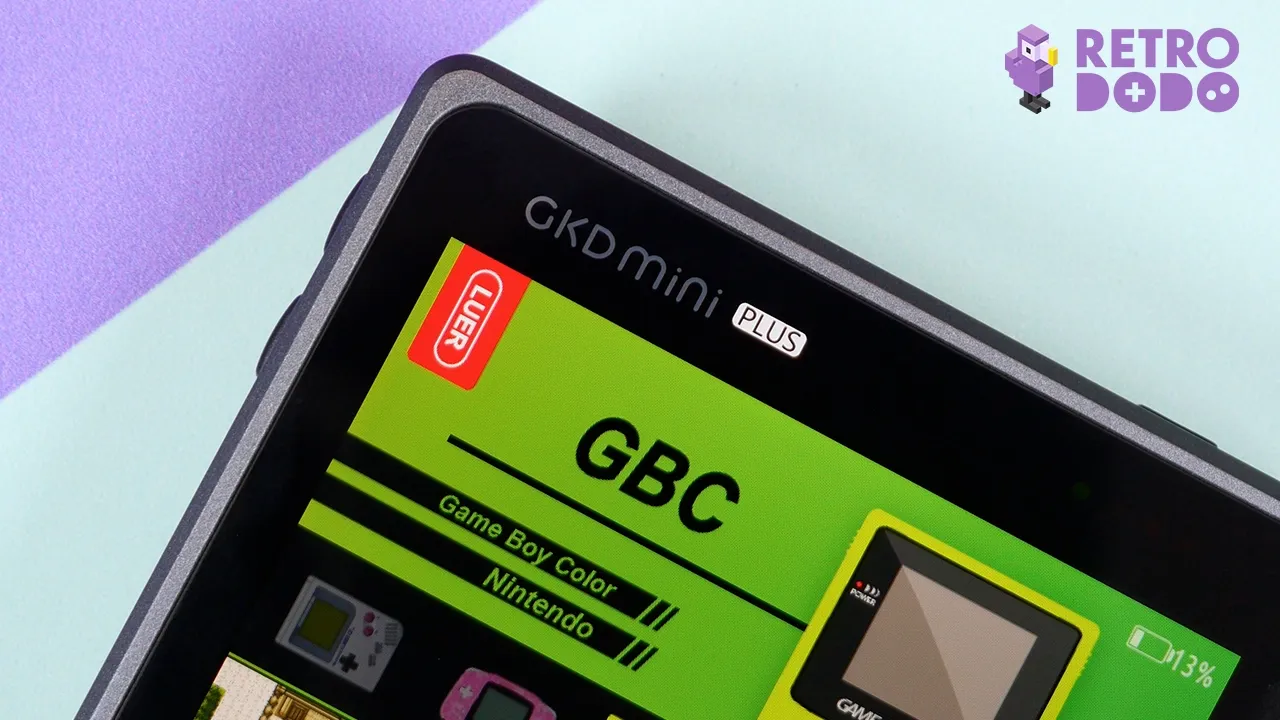
And then on the right you have the signature LED lights, that show when it’s charging and the battery life. This is the same design as their older handheld too, and has become an easy indicator that it’s a GKD device.
As mentioned to me, there’s just too many buttons on the face, with another confusing logo in the middle, which I have no idea what it means nor have they mentioned what the logo is in any of their marketing material… again odd. In the logo is another LED indicator which lights up red when charging.
The DPAD is large and high quality, with a hard soft touch and little travel to it. The action buttons are also high quality, and have a soft touch. There’s also very little movement on the buttons which adds to the high quality nature of the device.
Between them you’ll find your start select, and your emulator menu buttons for when you want to save or exit.
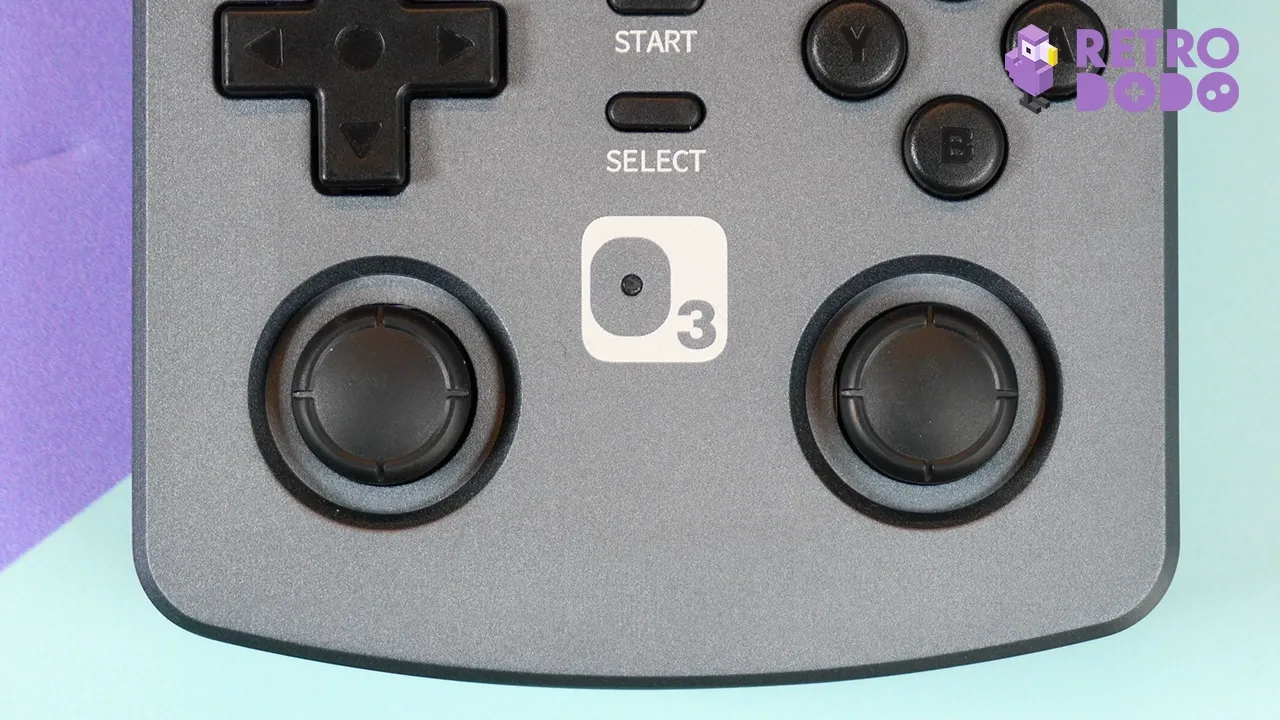
Then at the bottom you will find two analogue sticks, these are nearly identical to the nintendo switch, so are not hall joysticks which are the norm recently, and they obtrude out of the shell slightly more than the action buttons.
Hall joysticks would have been nice, especially when they are seen on other $150 retro handhelds on the market.
Around the sides you’ll find other buttons such as volume, sleep/wake, two SD card slots, a USB-C port, a headphone jack, and for the first time, R3/L3 buttons on the side that can be mapped accordingly.
An odd place to locate them, but I guess they’re a nice addition for those of you that like to map extra keys? I have yet to use them in all honesty.
Then finally on the back you’ll see what I mean when I say it has that Gameboy Color feel, because they’ve added a design that resembles a cartridge that says hello, and a curved bottom that houses the 3000MAH battery pack, which is easily removable might I add!
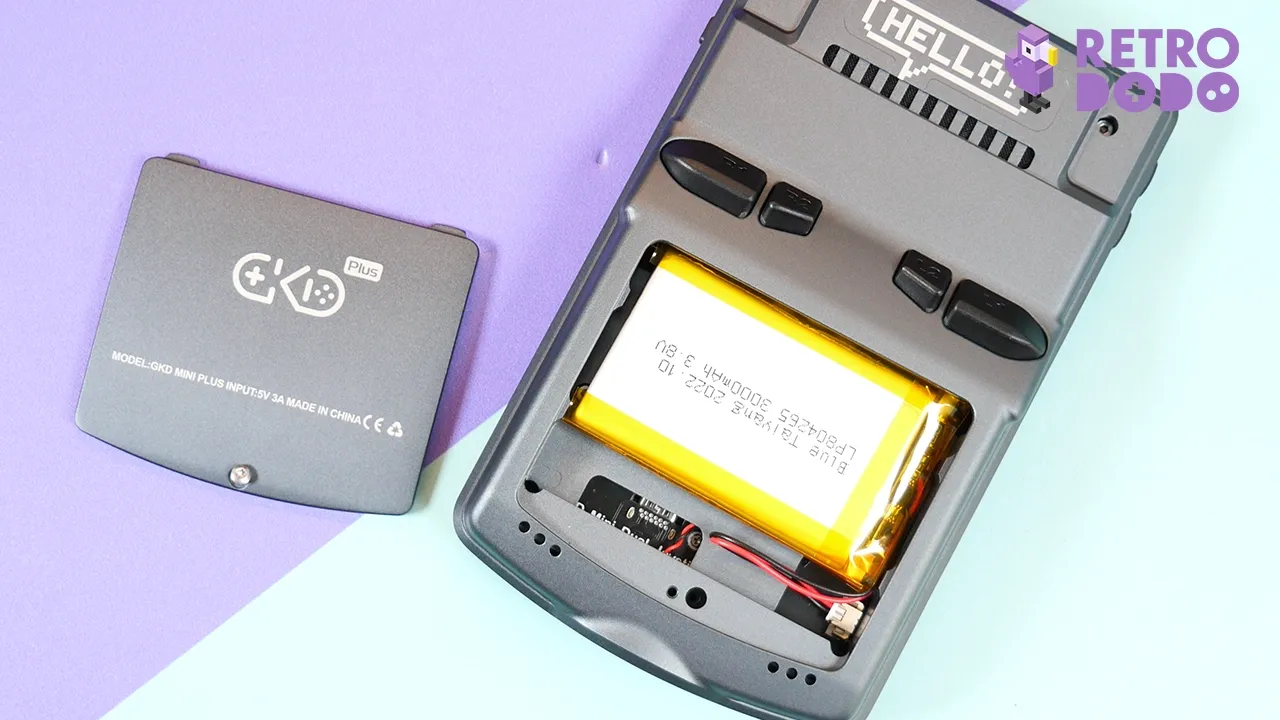
Below the battery compartment you have two speaker grills… yes speaker grills exactly where your hands rest, making the sound a little distorted at times, and because the sound is directed away from you, it makes it annoying for anyone in the same room as you, as i found myself turning up the volume to hear it properly.
This cements my reasoning for saying they made the front far too cluttered. They should have added the speaker grill on the front, and removed unnecessary buttons to the sides to help with the overall gaming experience.
As much as I love the back design, unfortunately these are one of the worst shoulder buttons I have seen on a handheld, up there with the RG353V.
Why these companies think shoulder buttons like these are a good idea is beyond me. GKD even shouts about it on their Kickstarter saying it’s an “ergonomic design” and they have calculated the perfect 15 degree angle for comfort.
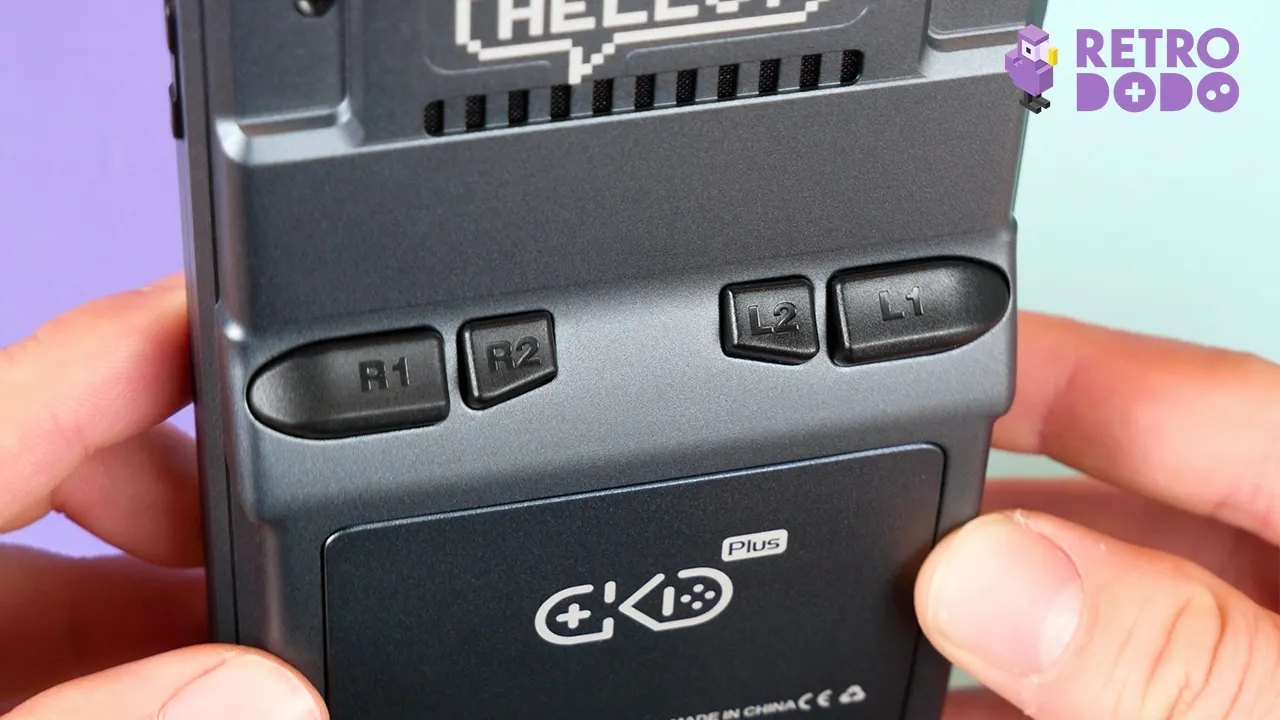
What are you on about?! These are horrific and my fingers can’t get any grip on them because it’s like a steep cliff edge doused in butter, and the R2/L2 buttons are so small it reminds me of when i’m trying to put a tiny lego piece on an awkward build.
It’s a real shame because every time I go to pick this up I then think “oh bloody hell, it’s got those tiny cliff edge shoulder buttons”, and I put it back down again because they are that bad.
This is really the only major design flaw of the entire handheld if you ignore the speaker placement, everything else is a personal preference.
The metal shells add a nice bit of weight to it, giving it that premium feel and adding extra resistance to bumps, scratches and drops should you be taking this with you when you travel.
For me, there’s just something nice about playing on a metal handheld, and it’s one of the first metal handhelds priced at around $150, others typically charge a higher premium for the metal aesthetic.
Overall, design wise, they’ve done a great job to make it a solid, comfortable handheld that looks sleek and modern, but have seriously messed up in some areas to a point that it stops me from picking it up from time to time.
Emulation Performance
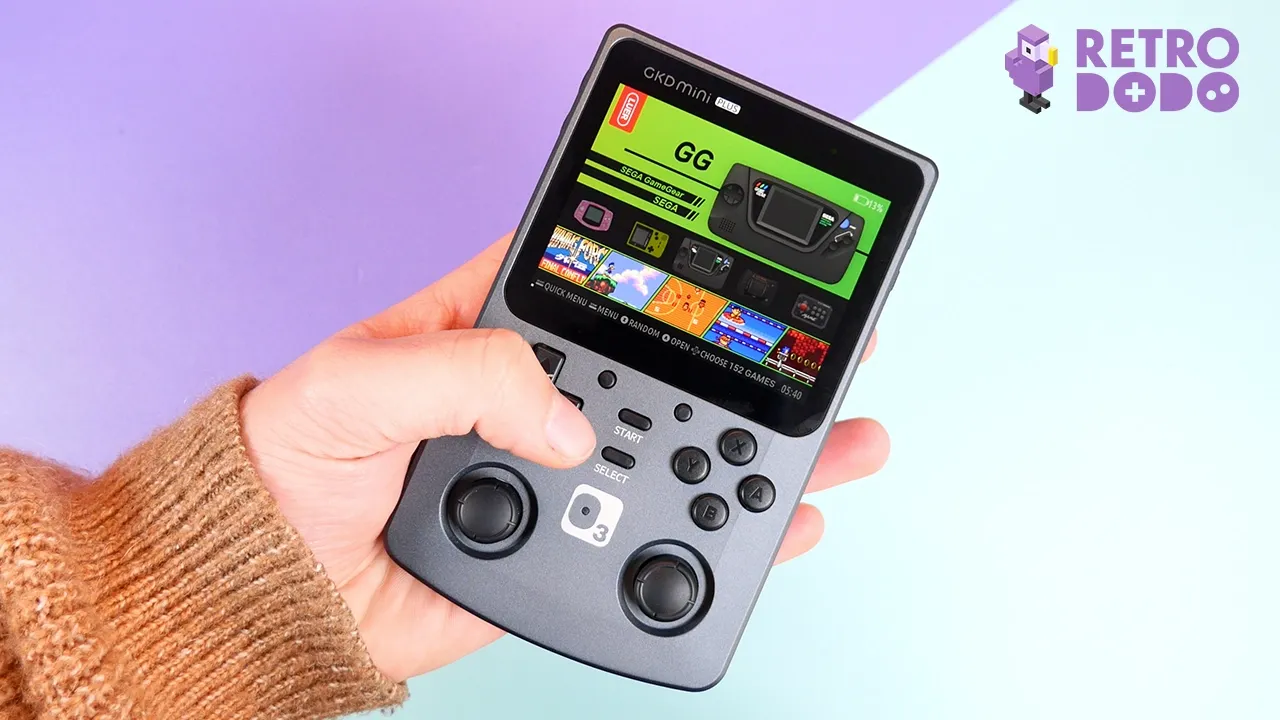
This uses the RK3566 chip alongside 1GB’s of RAM, which is a typical medium spec for retro handhelds released in 2022, and in my opinion is one of the best chips for a 3.5” handheld, anything larger will move you into Gamecube and PSP at 2x territory which in my opinion requires a larger screen to take full advantage of the power.
When you turn on the device you will be greeted with emulation station pre-installed, ready for you to jump straight into games.
It’s not the easiest or simplest of user interfaces but it’s good enough for any newcomer to understand.
It shows the icons of every console available to emulate, easy access to settings and once you’re in an emulator, you can tweak the settings accordingly to maximese gameplay quality.
GKD are promoting that they have pre-installed over 2500+ games, which is certainly illegal unless they have the licence to do so but i can imagine a lot of customers won’t mind that, even if ours was pre-installed with Chinese games instead of English.
Installing your own is as simple as adding ROMs to the designated folders on the second SD card included.
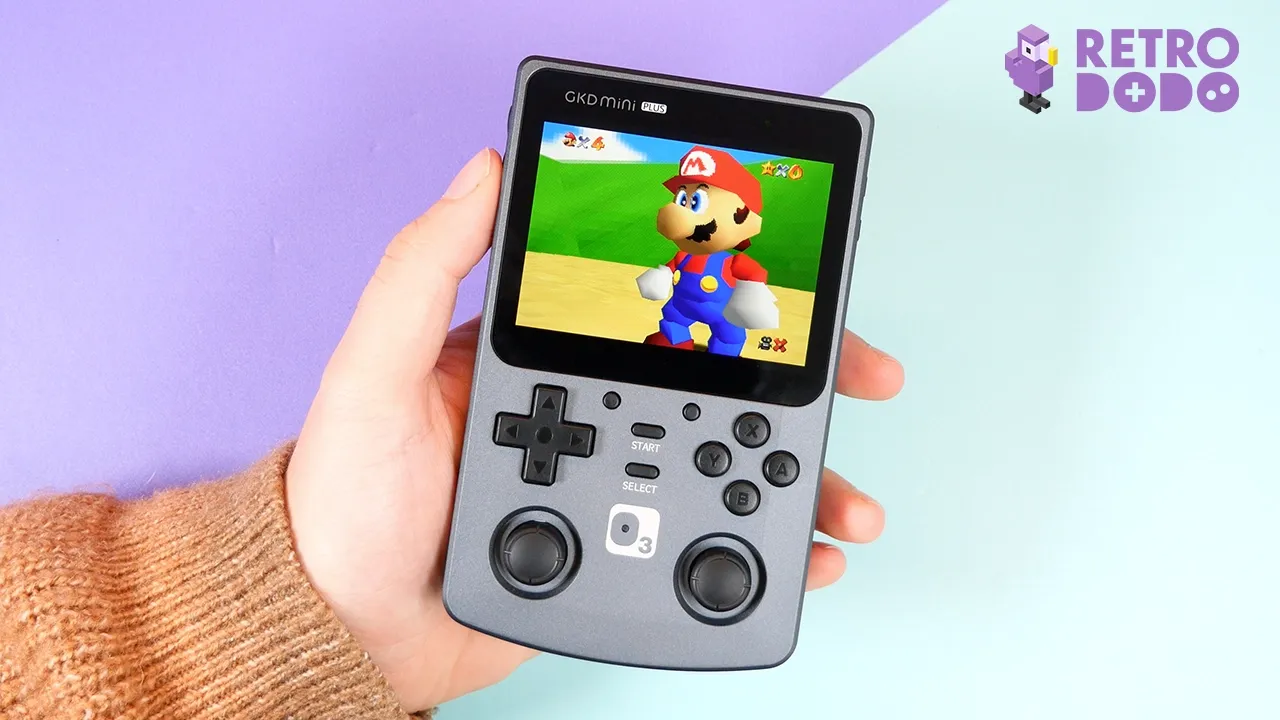
Because it uses a RK3566 chip I was confident in what it could run. Your old classics like Gameboy games, Game Gear games, ATARI Lynx, Wonderswan, NES, SNES and even Nintendo 64 games ran silky smooth on here.
I know, in 2022 that isn’t exactly impressive but on the bright 640 x 480 screen they all look stunning especially if you play consoles in native or scaled resolutions.
I then started testing consoles that required a bit more power, for example Playstation 1, and thanks to the dual analogue sticks you can play how you like. Playstation 1 games performed very well with no hiccups whatsoever, and again looked great on that display.
I then moved on to PSP emulation and this is where I saw some push back. Most PSP games do work well, but because the GKD Plus Classic has just 1GB’s of RAM it does struggle pushing high frame rates on large PSP games such as God Of War, which is a shame because adding another 1GB of RAM isn’t going to add much extra costs to this device.
But to my surprise I tested the best Dreamcast games thinking I would encounter the same issue, but thankfully that wasn’t so. All of the Dreamcast games I tested worked really well, with no frame rate issues, crashes or audio stutters.
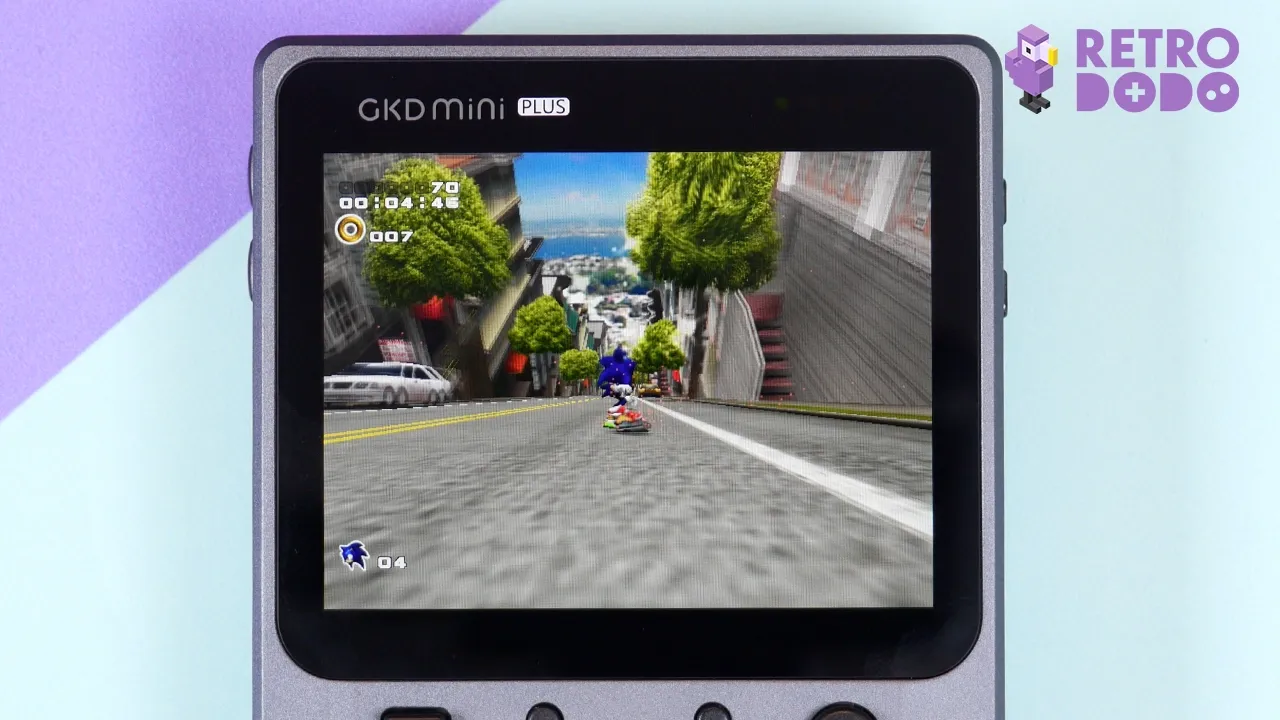
The 3000MAH battery performs well too, with a range of 4 – 5 hours on a single charge. Some of you may ask if the metal gets hot or warm when playing games for that long and I would say no, not really, you will notice it a slight warmth but nothing out of the ordinary.
So the GKD Classic Plus can basically emulate all of your retro consoles up to Dreamcast, but not including large, power intensive PSP games.
Which for $159 isn’t bad when you consider it’s one of the only vertical metal handhelds on the market, a niche that has very little competition or choice for customers wanting that design.
BUT it’s only $159 during the crowdfunding campaign, in reality this device is retailing for $179 on their website.
That to me is far too high in a time when the market is saturated and competitors are lowering their prices just to keep some skin in the game.
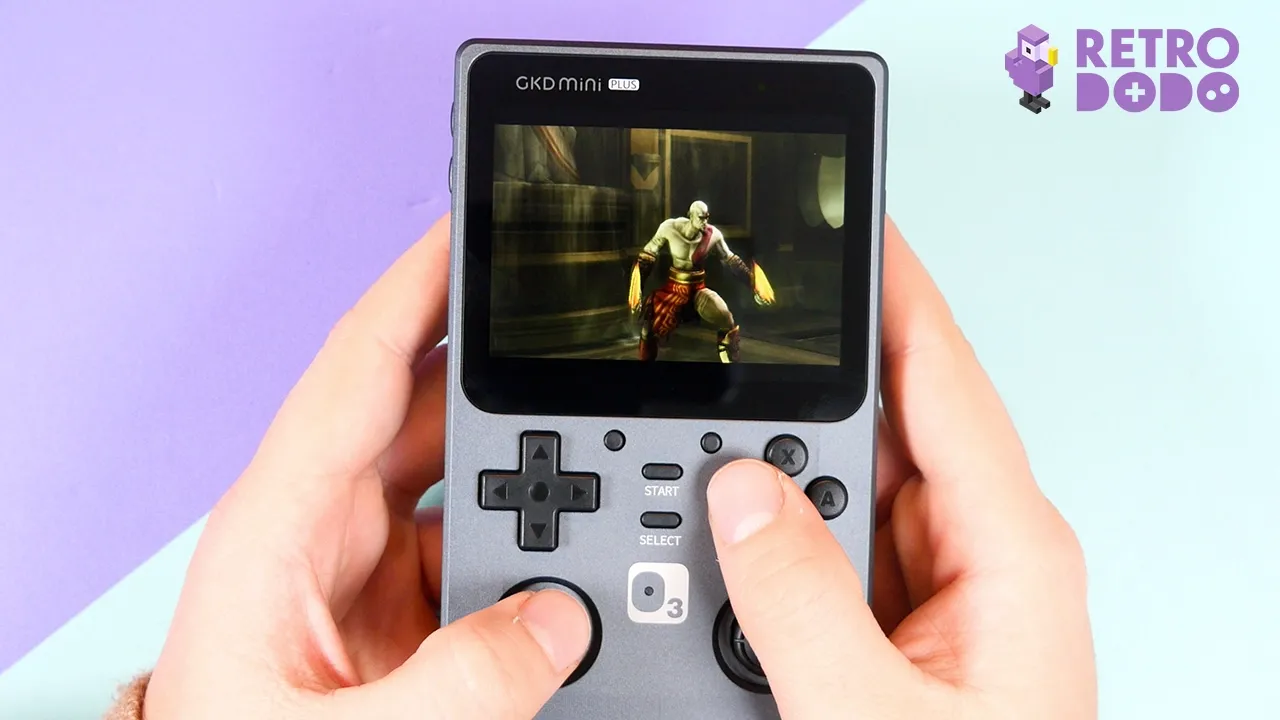
At $179 this is unfortunately not a good deal, especially when you consider that the Retroid Pocket 3+ and the RG35M outperform this for the same price.
At that price it needs a touch screen display, a Android OS, longer battery life, better shoulders and front facing speakers to even be considered.
Welcome back GKD, I have missed you, but you have some learning to do if you want to compete with the best retro handhelds.


